Text

"An unprecedented 'handshake in space occurred on STS-100 Endeavour, as the Canadian-built space station robotic arm (right), also referred to as Canadarm2, transferred its launch cradle over to Endeavour's Canadian-built robotic arm."
Date: April 28, 2001
NASA ID: STS100-347-007
18 notes
·
View notes
Text
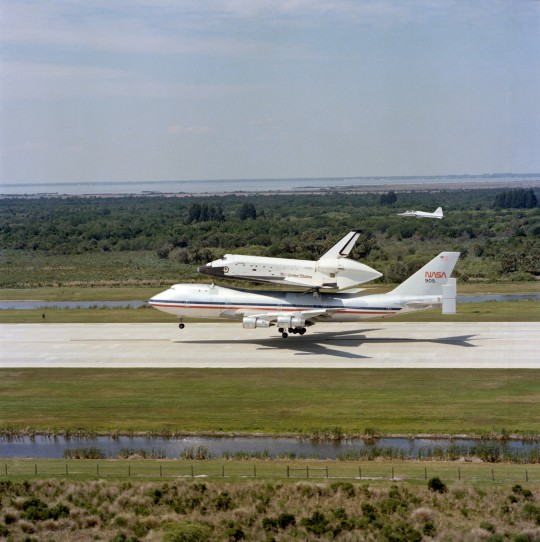
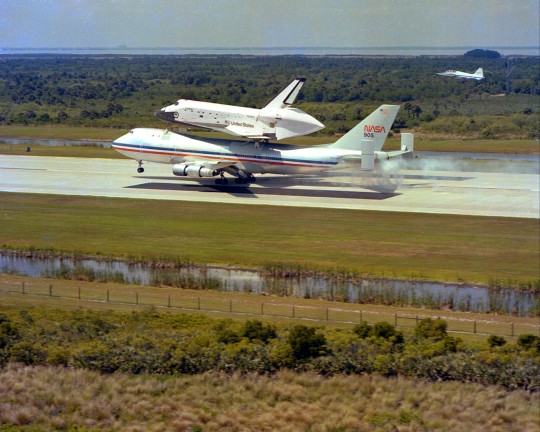
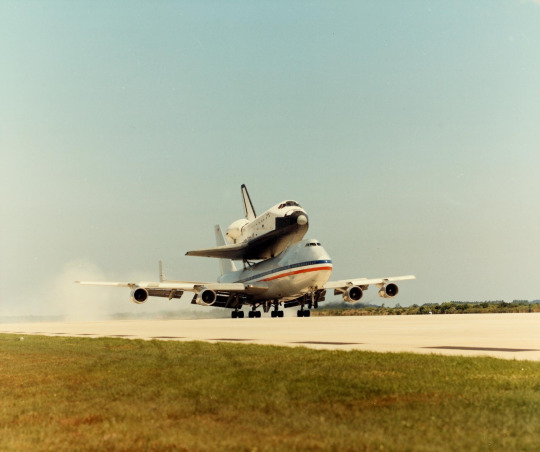
"This scene represents the end of NASA's STS-1 mission and the beginning of STS-2 in that the orbiter Columbia is arriving at Kennedy Space Center in Florida to begin the lengthy process of preparing it for STS-2. The vehicle landed at Dryden Flight Research Center on April 14 after an historic 2 1/3 day flight in Earth orbit. It was mated to this 747 aircraft, titled NASA 905, and flown over the USA to its Florida destination. It was later removed from atop NASA 905 and moved to the orbiter processing facility for the beginning of refurbishment."
Date: April 28, 1981
NASA ID: KSC-81PC-260, S81-32625, S81-32626
49 notes
·
View notes
Text

Melvin Burke, Ike Gillam, Fitz Fulton, and Deke Slayton give the Space Shuttle Columbia a humorous sendoff before it's ferry flight back to KSC in Florida
"After completing it's first orbital mission with a landing at Edwards Air Force Base on April 14, 1981, Space Shuttle Columbia received a humorous sendoff before it's ferry flight atop a modified 747 back to the Kennedy Space Center in Florida. Holding the sign are, left to right: Melvin Burke, DFRC Orbital Flight Test (OFT) Program Manager; Isaac 'Ike' Gillam, DFRC Center Director; Fitzhugh 'Fitz' L. Fulton Jr., NASA DFRC 747 SCA Pilot; and Donald K. 'Deke' Slayton, JSC OFT Project Manager."
Date: April 28, 1981
NASA ID: ECN-15388
37 notes
·
View notes
Text

The installed ejection seat on Space Shuttle Enterprise in preparation for the next stage of the Altitude and Landing Tests.
Date: April 28, 1977
NASA ID: EC77-7247
#Space Shuttle#Space Shuttle Enterprise#Enterprise#OV-101#Orbiter#NASA#Space Shuttle Program#Dryden Flight Research Center#Edwards Air Force Base#California#April#1977#Approach and Landing Tests#my post
9 notes
·
View notes
Photo

An F6F-3 of VF-16 recovers aboard USS Lexington (CV-16) as another approaches for landing, 28 April 1944
208 notes
·
View notes
Text

"In the center foreground of this 1953 hangar photo is the YF-84A (NACA 134/Air Force 45-59490) used for vortex generator research. It arrived on November 28, 1949, and departed on April 21, 1954. Beside it is the third D-558-1 aircraft (NACA 142/Navy 37972). This aircraft was used for a total of 78 transonic research flights from April 1949 to June 1954. It replaced the second D-558-1, lost in the crash which killed Howard Lilly. Just visible on the left edge is the nose of the first D-558-2 (NACA 143/Navy 37973). Douglas turned the aircraft over to NACA on August 31, 1951, after the contractor had completed its initial test flights. NACA only made a single flight with the aircraft, on September 17, 1956, before the program was cancelled. In the center of the photo is the B-47A (NACA 150/Air Force 49-1900). The B-47 jet bomber, with its thin, swept-back wings, and six podded engines, represented the state of the art in aircraft design in the early 1950s. The aircraft undertook a number of research activities between May 1953 and its 78th and final research flight on November 22, 1957. The tests showed that the aircraft had a buffeting problem at speeds above Mach 0.8. Among the pilots who flew the B-47 were later X-15 pilots Joe Walker, A. Scott Crossfield, John B. McKay, and Neil A. Armstrong.
On the right side of the B-47 is NACA's X-1 (Air Force 46-063). The second XS-1 aircraft built, it was fitted with a thicker wing than that on the first aircraft, which had exceeded Mach 1 on October 14, 1947. Flight research by NACA pilots indicated that this thicker wing produced 30 percent more drag at transonic speeds compared to the thinner wing on the first X-1. After a final flight on October 23, 1951, the aircraft was grounded due to the possibility of fatigue failure of the nitrogen spheres used to pressurize the fuel tanks. At the time of this photo, in 1953, the aircraft was in storage. In 1955, the aircraft was extensively modified, becoming the X-1E."
Date: April 27, 1953
NASA ID: E-960
35 notes
·
View notes
Text

"A high-angle view of the Apollo 16 welcoming aboard ceremonies on the deck of the prime recovery ship, USS TICONDEROGA (CV-14). It was soon after the splashdown of the Apollo 16 Command Module (CM-113) in the central Pacific Ocean approximately 215 miles southeast of Christmas Island. Astronaut John W. Young, commander, is standing at the microphone. Standing behind Young are astronaut Charles M. Duke Jr. (Left), lunar module pilot; and astronaut Thomas K. Mattingly II, command module pilot. The splashdown occurred at 290:37:06 ground elapsed time, 1:45:06 p.m. (CST), Thursday, April 27, 1972. The coordinates were 00:43.2 degrees south latitude and 156:11.4 degrees west longitude. The three crew members were picked up by helicopter and flown to the deck of TICONDEROGA."
Date: April 27, 1972
NASA ID: S72-36262
15 notes
·
View notes
Text

"The Apollo 16 Command Module bobbles photographed in the waters of the central Pacific Ocean during recovery operations. The prime recovery ship, USS TICONDEROGA (CV-14), is in the background. A recovery helicopter hovers overhead. The Apollo 16 crew, astronauts John W. Young, Thomas K. Mattingly II, and Charles M. Duke Jr., were picked up by helicopter and flown to the deck of the ship. The splashdown occurred at 290:37:06 ground elapsed time, 1:45:06 p.m. (CST), Thursday, April 27, 1972, at coordinates of 00:45.2 degrees south latitude and 156:11.4 degrees west longitude, a point approximately 215 miles southeast of Christmas Island. A team of Earth Landing System swimmers assisted with the recovery operations."
Date: April 27, 1972
NASA ID: S72-36602
50 notes
·
View notes
Text
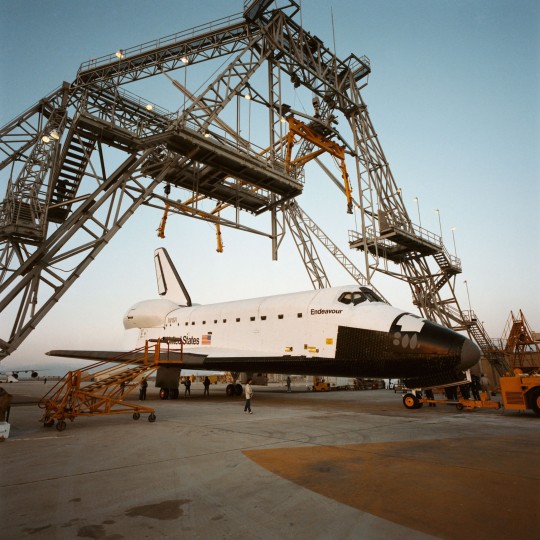

"A Rockwell worker at the space shuttle's Palmdale Final Assembly Facility in Palmdale, Calif., takes a technical documentation image of space shuttle Endeavour as it is prepared for its first ferry flight to NASA's Kennedy Space Center in Florida aboard the agency's Shuttle Carrier Aircraft, or SCA, designated NASA 911. Endeavour is scheduled to return to California in 2012, where it will be on public display at the California Science Center in Los Angeles. Its ferry flight across America is targeted for mid-September. Endeavour was the last space shuttle added to NASA’s orbiter fleet. During the course of its 19-year career, Endeavour spent 299 days in space during 25 missions."
Date: April 27, 1991
NASA ID: S91-39480, S91-39486
66 notes
·
View notes
Text



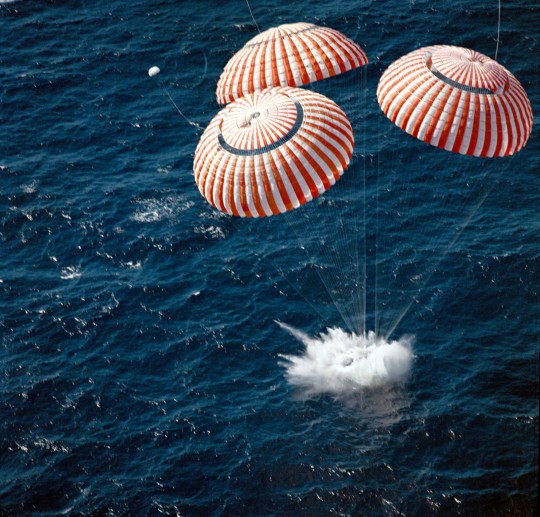
"The Apollo 16 Command Module splashed down in the Pacific Ocean on April 27, 1972 after an 11-day moon exploration mission. The sixth manned lunar landing mission, the Apollo 16 (SA-511), carrying three astronauts: Mission Commander John W. Young, Command Module pilot Thomas K. Mattingly II, and Lunar Module pilot Charles M. Duke, lifted off on April 16, 1972. The Apollo 16 continued the broad-scale geological, geochemical, and geophysical mapping of the Moon’s crust, begun by the Apollo 15, from lunar orbit. This mission marked the first use of the Moon as an astronomical observatory by using the ultraviolet camera/spectrograph which photographed ultraviolet light emitted by Earth and other celestial objects. The Lunar Roving Vehicle, developed by the Marshall Space Flight Center, was also used."
Date: April 27, 1972
NASA ID: S72-36287, S72-36291, 0401429, S72-36293
74 notes
·
View notes
Text
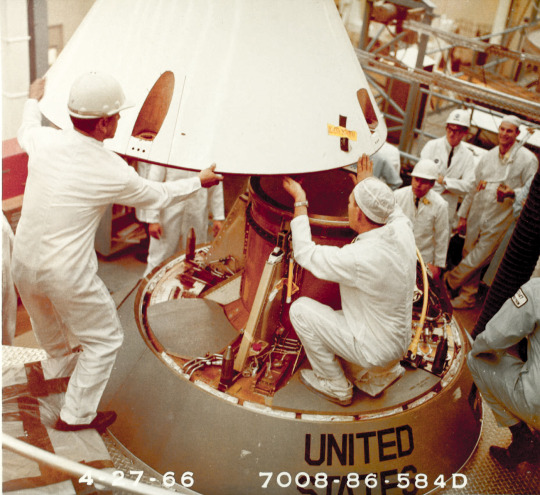
Worker installing the parachute cover on the Apollo 1 Command Module (CM-012) at North American Aviation's facility in Downey, California.
Date: April 27, 1966
SDASM Archives: Casson_0027
#Apollo 1#AS-204#Apollo CSM Block I#CSM-012#NASA#Apollo Program#C-type Mission#Cancelled#Cancelled Mission#Construction#North American Aviation#Factory#Downey#California#April#1966#my post
21 notes
·
View notes
Photo
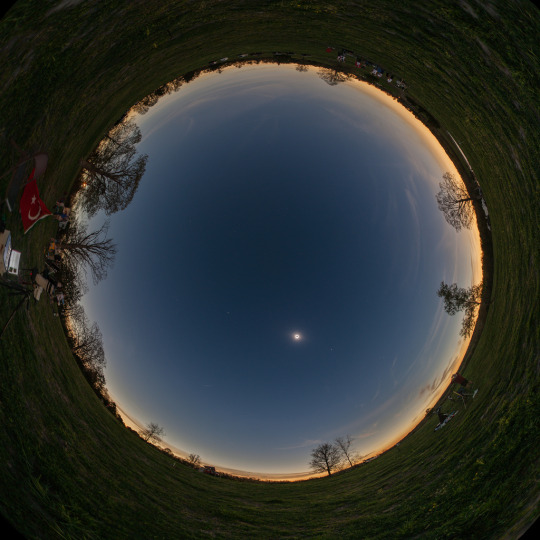
2024 April 27
All Sky Moon Shadow
Image Credit & Copyright: Tunc Tezel (TWAN)
Explanation: If the Sun is up but the sky is dark and the horizon is bright all around, you might be standing in the Moon’s shadow during a total eclipse of the Sun. In fact, the all-sky Moon shadow shown in this composited panoramic view was captured from a farm near Shirley, Arkansas, planet Earth. The exposures were made under clear skies during the April 8 total solar eclipse. For that location near the center line of the Moon’s shadow track, totality lasted over 4 minutes. Along with the solar corona surrounding the silhouette of the Moon planets and stars were visible during the total eclipse phase. Easiest to see here are bright planets Venus and Jupiter, to the lower right and upper left of the eclipsed Sun.
∞ Source: apod.nasa.gov/apod/ap240427.html
93 notes
·
View notes
Text
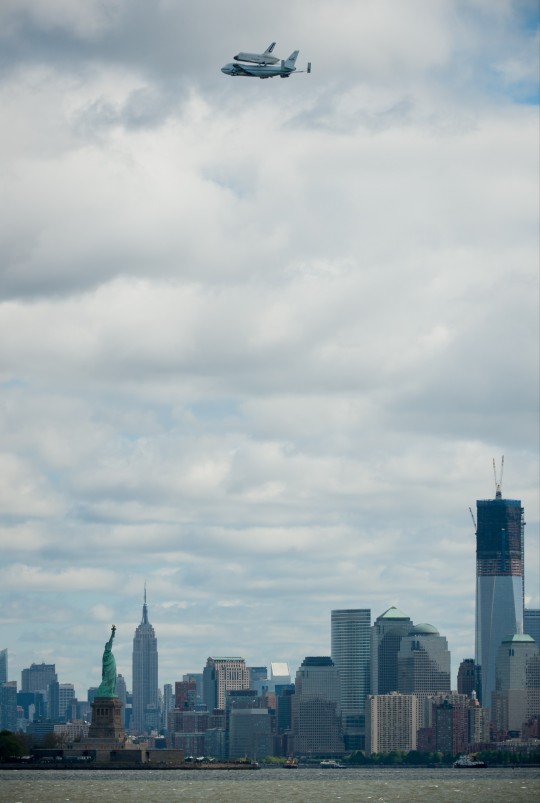
Shuttle Enterprise Flight To New York
"Space Shuttle Enterprise, mounted atop a NASA 747 Shuttle Carrier Aircraft (SCA), is seen as it flies near the Statue of Liberty, Friday, April 27, 2012, in New York. Enterprise was the first shuttle orbiter built for NASA performing test flights in the atmosphere and was incapable of spaceflight. Originally housed at the Smithsonian's Steven F. Udvar-Hazy Center, Enterprise will be demated from the SCA and placed on a barge that will eventually be moved by tugboat up the Hudson River to the Intrepid Sea, Air & Space Museum in June."
Photo Credit: (NASA/Bill Ingalls)
Date: April 27, 2012
NASA ID: 201204270016HQ
52 notes
·
View notes
Text

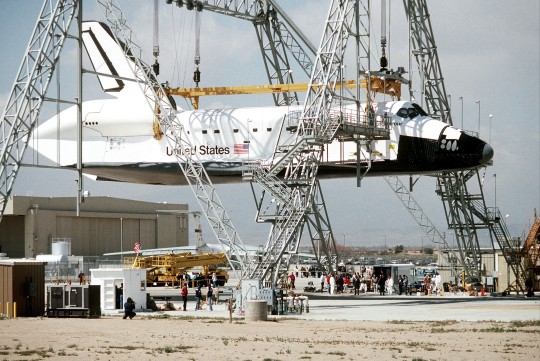
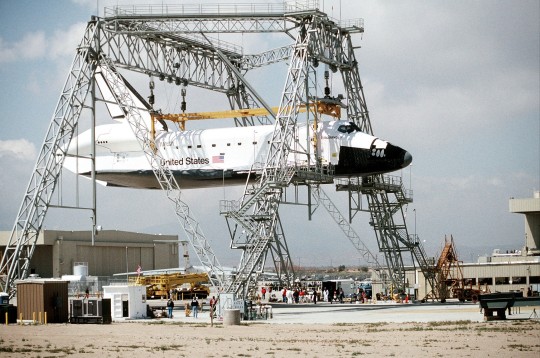

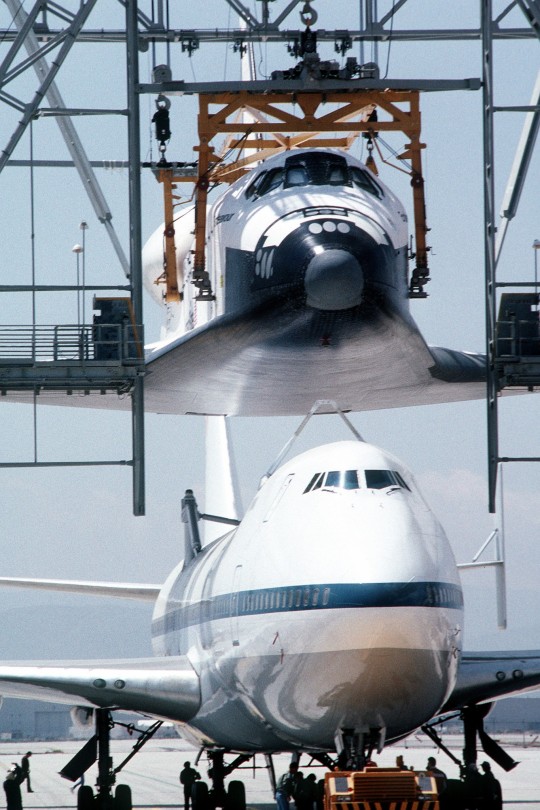

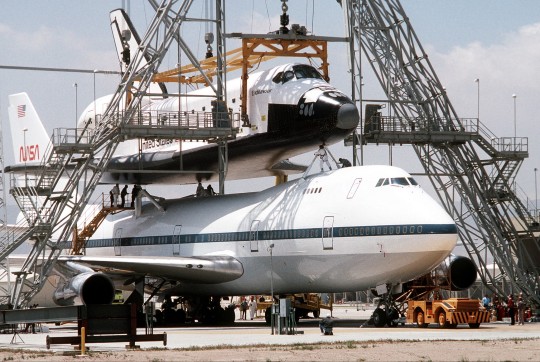
The NASA 747 Shuttle Carrier Aircraft (SCA) in position beneath the Space Shuttle Endeavour (Orbiter Vehicle-105), suspended with a massive lifting structure, at Rockwell International's Air Force Plant 42, Site 1, at Palmdale, California. The shuttle will be attached to the 747 SCA for transporting to the Kennedy Space Center, FLorida.
Produced: April 26, 1991
NARA: 6506111, 6506112, 6506113, 6506120, 6506116, 6506118
source
57 notes
·
View notes
Text


The HL-20 Personal Launch System (PLS) is a concept for assured access to space for people and priority cargo. Pictured is the PLS operating at the Space Station Freedom, which became the International Space Station.
Date: April 26, 1990
NASA ID: EL-1996-00177
source
50 notes
·
View notes
Text

Attack version of the Douglas B-42 Mixmaster
source
#Douglas XB-42 Mixmaster#Douglas XB-42#XB-42 Mixmaster#XB-42#B-42#Mixmaster#Bomber#Cancelled#United States Air Force#U.S. Air Force#US Air Force#USAF
15 notes
·
View notes
